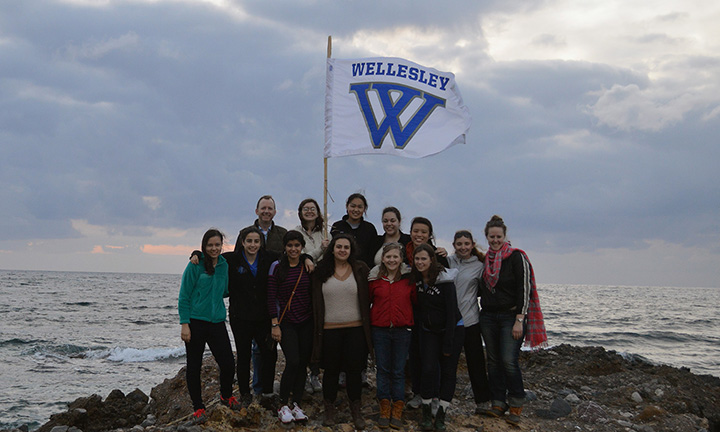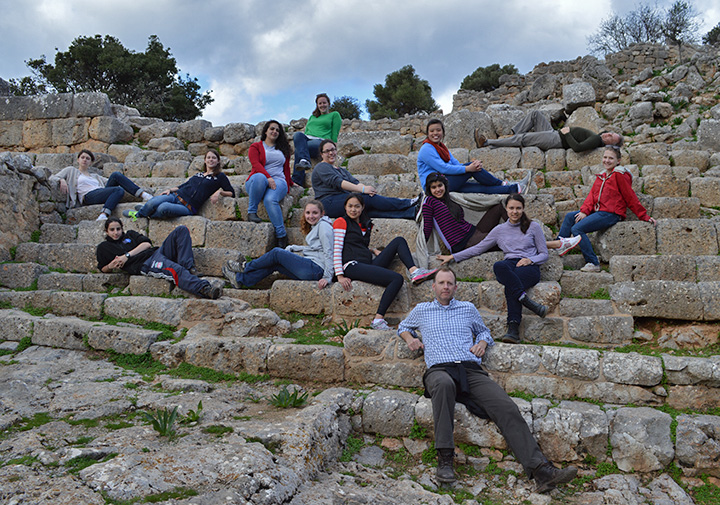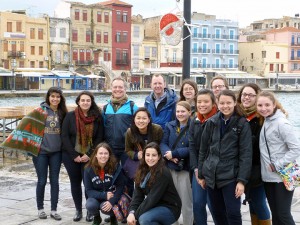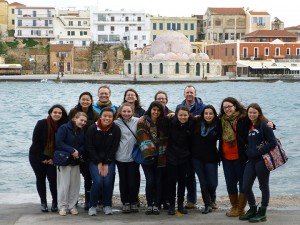This blog recounts our experiences in January 2014, during a travel course across Crete – all across Crete: up mountains, through ravines, from coast to coast to coast. You will see that we devoted much time to the archaeology and history of this island, from the Bronze Age through World War II. And we hope you will also be interested in our investigation of Cretan identity: we asked all kinds of people if they felt more Greek or more Cretan, and thought about the shifting status of Cretans in relation to external forces – especially through years of occupation by Roman, Ottoman, and Venetian empires, and even by other European powers in the 20th century.
All the students enrolled in “Crete through the Ages” contributed to the blog, so you are sure to note the diversity of their interests and hopefully how committed they all were to getting the most out of our experience. If you want to follow chronologically, start at the bottom of this page!




